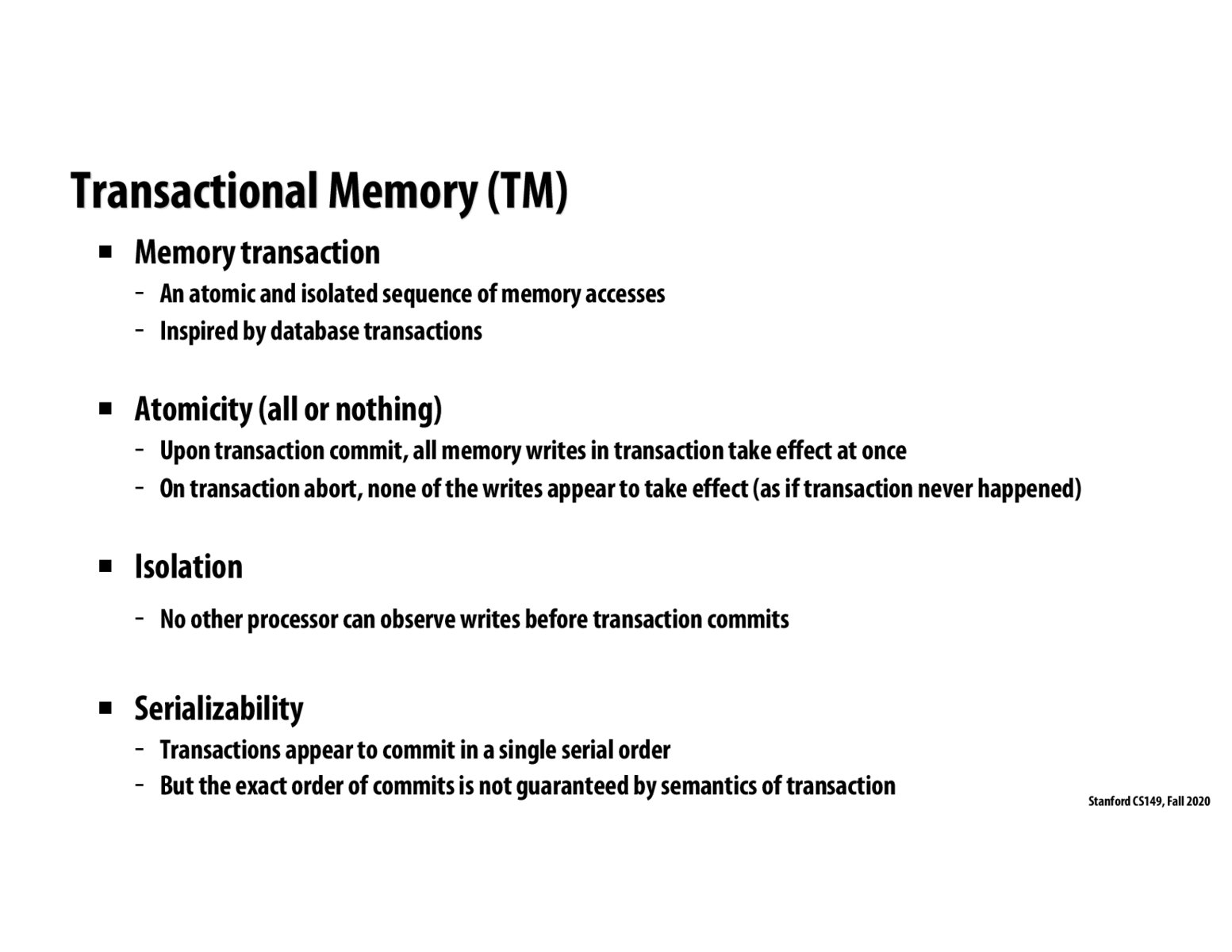


This was also a parallel I was trying to draw as well, and this was a useful description. Not needing persistence is changes the problem in a pretty interesting was. I was thinking about why we couldn't do something similar to databases like WAL, but without a need for persistence there's no need for the extra redundancy

Serializability means that transactions appear to commit in a single, serial order. Different transactions can be interleaved and not literally serial, as long as the effect is the same as that of an execution of at least one serial ordering of the various transactions.

Difference between Atomicity and Isolation: Atomicity describes the behavior within an individual transaction. Isolation describes the behavior among more than one transactions. (i.e. Atomicity: All of the operations in a transaction are executed or none are. Isolation: Each transaction executes in isolation from one another.)
Please log in to leave a comment.
I was reading about the difference between database transactions and memory transactions and found this (https://stackoverflow.com/questions/2495671/is-software-transactional-memory-the-same-as-database-transactions#:~:text=The%20idea%20of%20a%20%22transaction,and%20how%20they%20are%20used.&text=Database%20transactions%20are%20an%20application,until%20the%20transaction%20is%20committed.) to be a pretty good answer. I think the main difference is that persistence is a concept in the database because when a transaction is committed, the state of the data changes. When it comes to memory transactions, we only know the values of variables are changed when a transaction is committed but this has nothing to do with persistence.